My BWL blog post today comes from my recent experience of organizing my children’s books and re-reading some classics. Enjoy! https://bwlauthors.blogspot.com/


My BWL blog post today comes from my recent experience of organizing my children’s books and re-reading some classics. Enjoy! https://bwlauthors.blogspot.com/

I’m looking forward to discussing the Nuances of Mystery and Crime Writing with my fellow panelists P. D. Workman and Garry Ryan and moderator Niaill Howell at the WGA conference https://writersguild.ca/wga-2025-conference-genre-and-form-through-time-june-7-8/ this Saturday.
On Saturday, May 3, I celebrated May Day with back-to-back-to-back activities. The day began with sunshine, warmth, and my morning Heritage Walk in Calgary’s Tuxedo Park — my first time leading a Jane’s Walk. Forty-three people turned up at our meeting spot in Balmoral Circus Park, which conveniently provided chairs for half of the attendees.
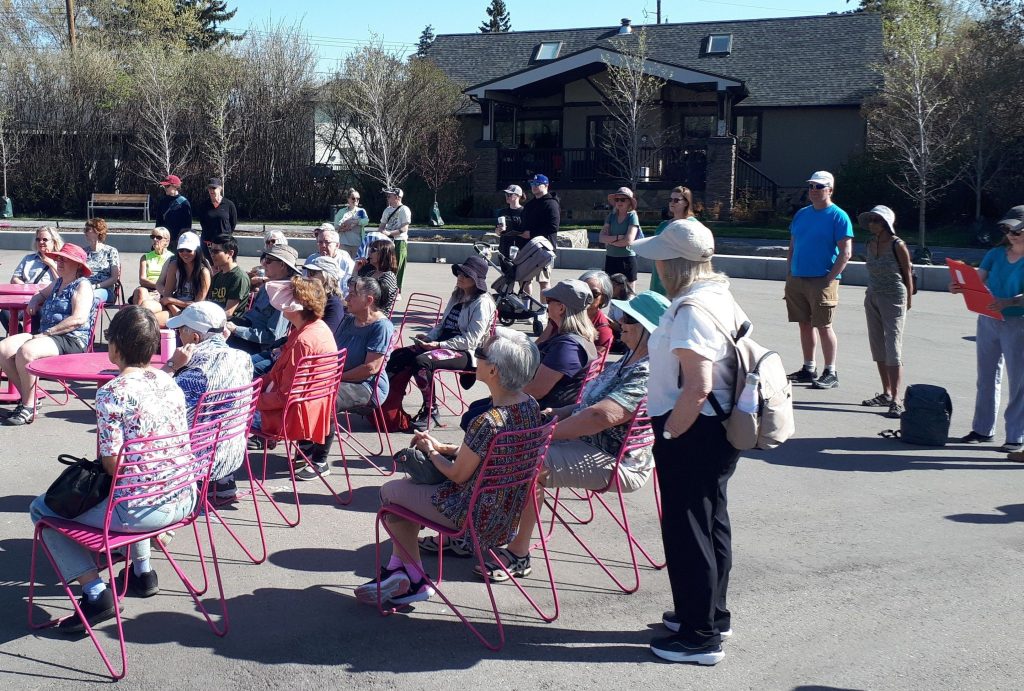
After my introduction and a discussion of the intersection’s history and recent transformation into a park, we set off to explore the other historical sites in the neighbourhood that I had chosen for the setting of my mystery novel, A Killer Whisky.
The whole walk took 1.5 hours. Highlights included unexpected contributions by walk participants. A woman who grew up in the neighbourhood recalled that the house in the above picture used to be a Scout Hall. She rang the home’s doorbell to see if the owners could confirm this. They said they were newcomers but would contact the previous owners and send her more information.
At our next stop, a surprise for me was a “Sold” sign in front of the blue house in this picture.

A few weeks earlier, when I’d researched the walk, no sign was there. I had imagined this 1912 house as the residence of my novel’s protagonist. A woman in the walking group Googled the real estate listing and found the description boasted that the home was featured in a Jane’s Walk. During my research trip, I’d dropped a flyer in the mailbox advising the owners about the upcoming walk. Evidently their real estate agent viewed this as a selling point.
Between my morning and afternoon walks, I grabbed a burger and fries at a nearby local landmark, Peter’s Drive In. After lunch, I repeated my Jane’s Walk for 40 new participants. The afternoon walk featured three guest speakers.
The first speaker was planned. In front of the 1912 commercial building that once housed a branch of the Calgary Public Library, author and literary historian Shaun Hunter spoke about Elaine Catley, a Canadian writer who lived in Tuxedo Park in the 1920s.
The two other speakers were spontaneous additions. When we discovered an urban planner from the City of Calgary was in the audience, we asked her explain about Heritage Protection laws, which I wasn’t familiar with.
Later, a woman who’d gone to Balmoral Bungalow School shared her memories of attending the school that was built to temporarily house students during Calgary’s periods of rapid school enrollment. The school is boarded up now, although an application has been made to make it a daycare centre.

From the walk, I drove to the Austrian Canadian Cultural Centre for a dinner/dance to celebrate May Day and the Centre’s 70th anniversary. May Day, the halfway point between the spring equinox and the summer solstice, welcomes the summer growing season with the traditional Maypole dance.
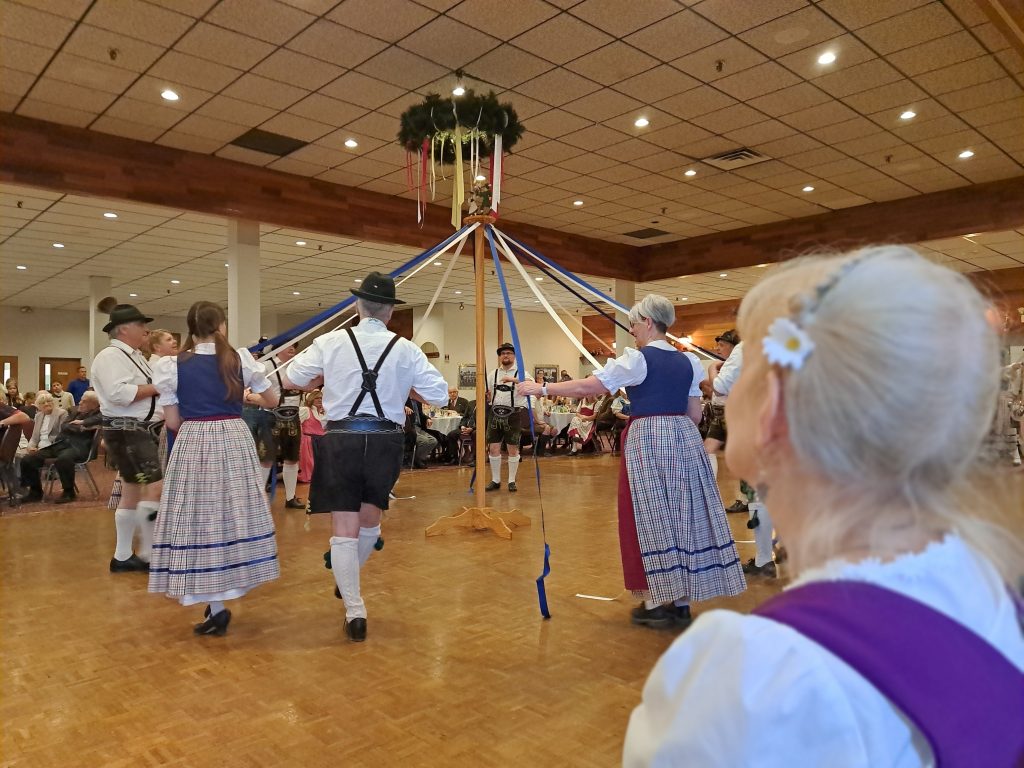
During the day, groups from Western Canada had gathered at the Centre for workshops on Schuhplattler dancing. My sister’s German dance club came from Victoria and dressed in dirndl and Lederhosen for the occasion.
After the workshop presentations, the band continued with polkas. I was tired from my busy day, but couldn’t resist hitting the dance floor when the band segued to Elvis’ “Blue Suede Shoes.” By midnight, I was ready to crash in our hotel room.
What a fun way to usher in summer. Happy Merry Month of May to you!

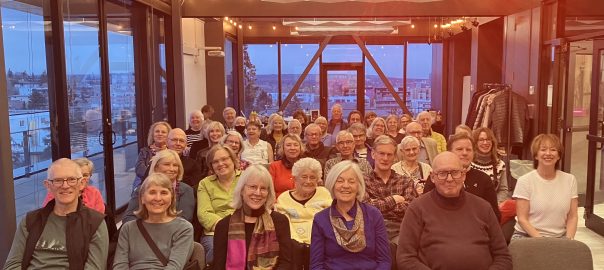
I enjoyed my book launch for my new novel, A Killer Whisky, on Tuesday night. The weather co-operated with relatively mild temperatures and a hint of sunshine. Views from the Treehouse at cSPACE Marda Loop were lovely. It was especially great to see so many smiling, supportive faces and chat with newcomers and friends.
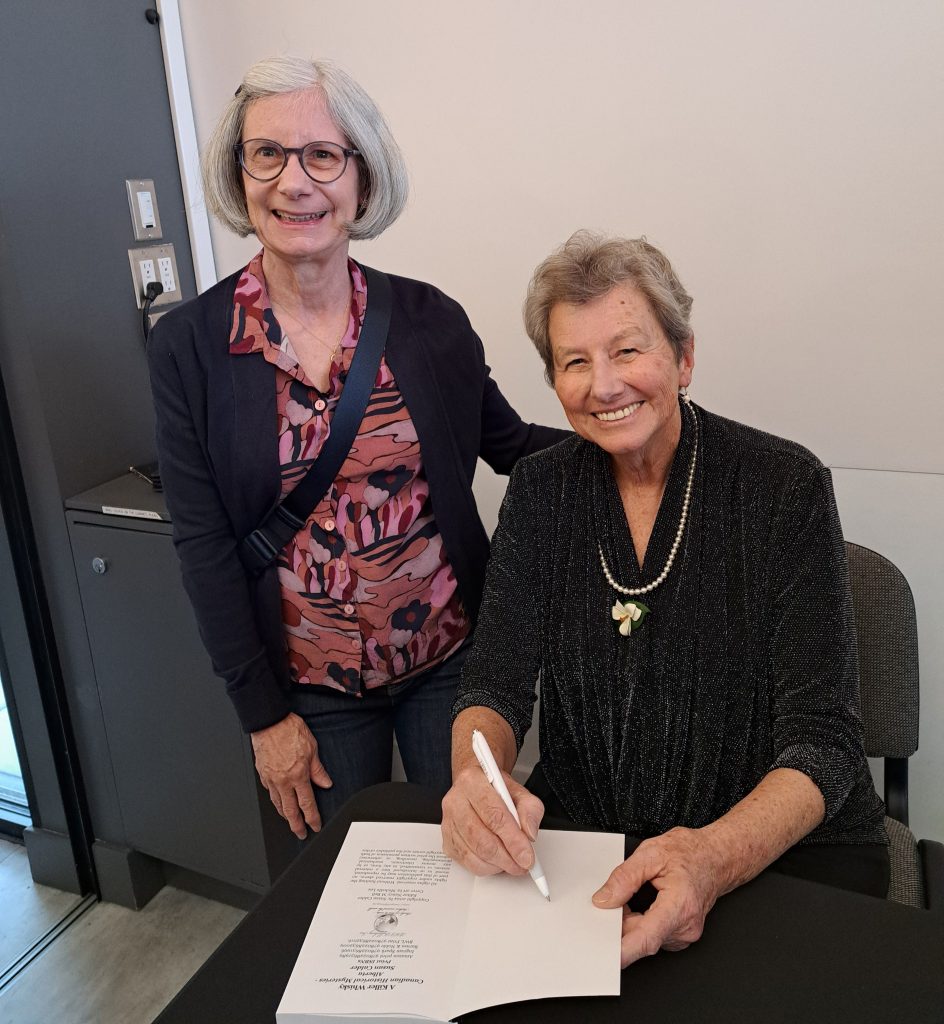
As part of the festivities, we offered “wee drams” of whisky and whisky cocktails named for some of A Killer Whisky’s characters. The most popular cocktail was “Katharine’s Patriotic Canadian Maple Whisky Sour.” Here’s the simple recipe:
Ingredients – yields one serving
1.5 oz whisky
1 oz lemon juice
2-4 teaspoons maple syrup
Pinch of ground cinnamon (optional)
Instructions
Fill a cocktail shaker or mason jar about 2/3 full with ice.
Add whisky, lemon juice, maple syrup, pinch of cinnamon.
Securely fasten the lid and shake well.
Pour ice into cocktail glass.
Add maple whisky sour mixture.
Enjoy!
This was my favourite cocktail, too, but I refrained from drinking at the launch to stay alert for my discussion of how I came to write A Killer Whisky and the history that forms a backdrop to the story.
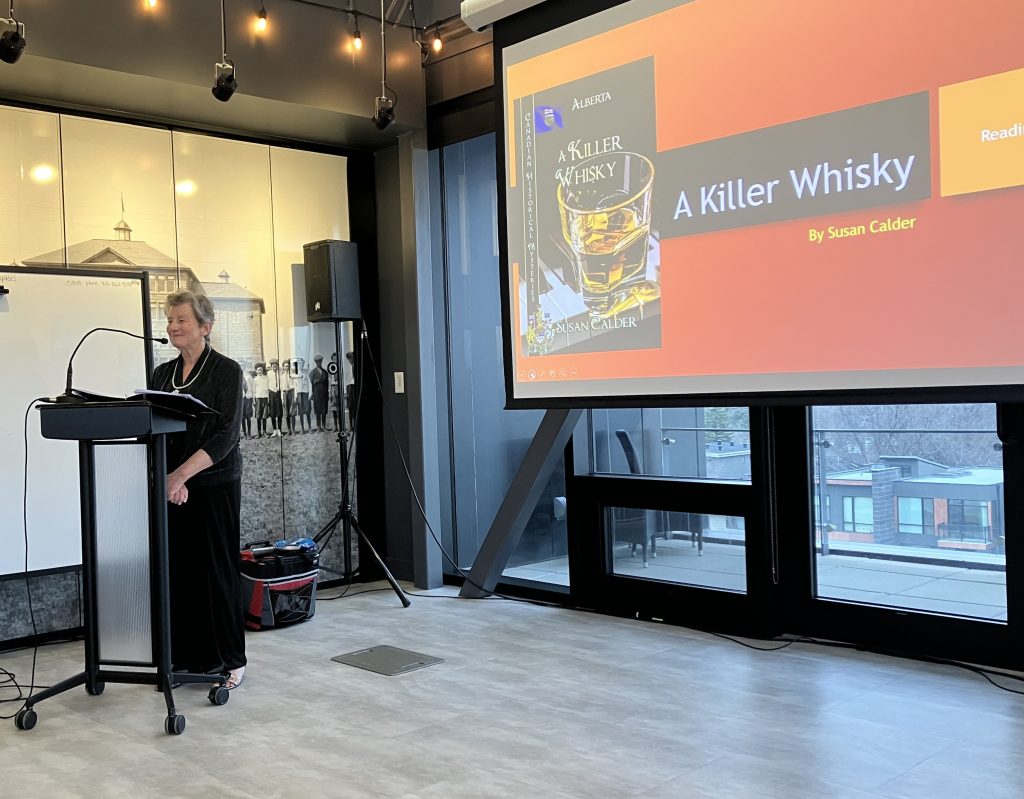
My friend and Calgary literary historian, Shaun Hunter, did a fabulous job of hosting the event. Another friend and writer Leslie Gavel kept the slide show moving smoothly. Judith from Owl’s Nest Bookstore created a fine display of my six novels.
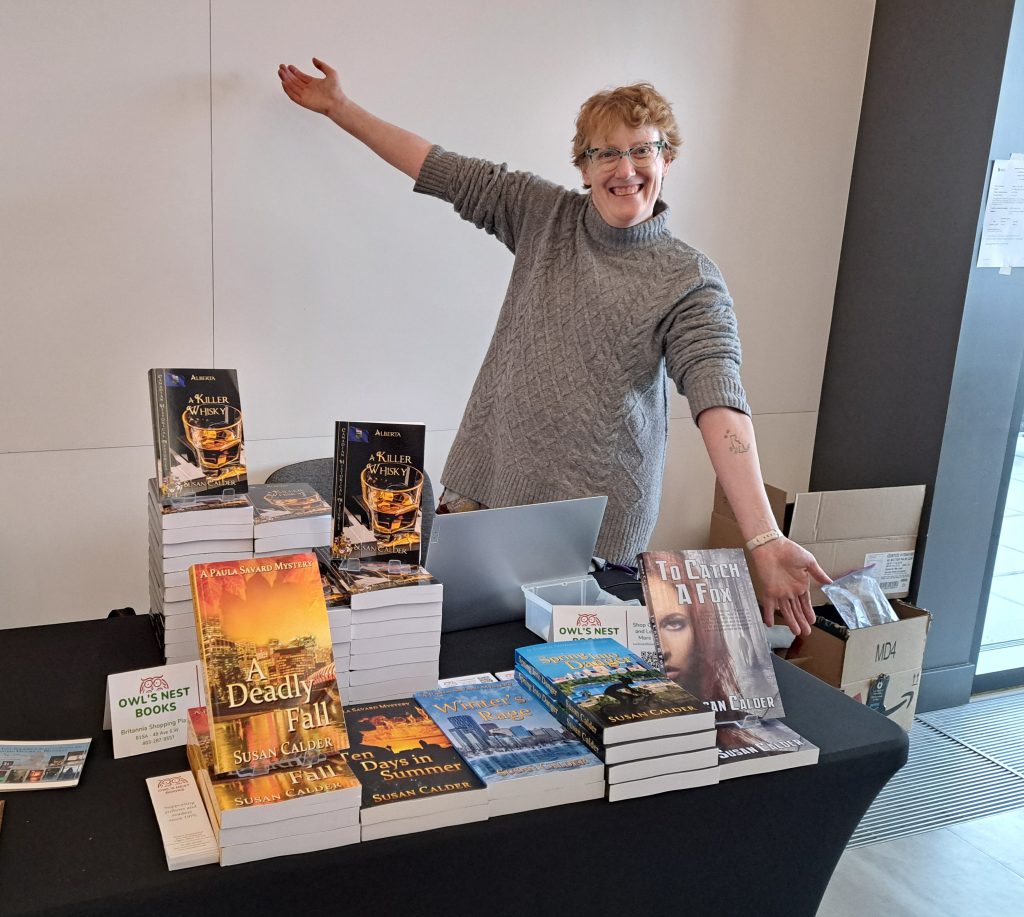
Most people seemed to go home feeling satisfied and enthused with the event. I couldn’t ask for better launch my novel, A Killer Whisky.

I have two stops for this finale day of my blog blitz tour. Here they are:
Our Town Book Reviews:https://www.ourtownbookreviews.com/2025/02/a-killer-whisky.html?sc=1741358052467#c5823763710522951092
The Avid Reader: Blurb Blitz + #Giveaway: A Killer Whisky by Susan Calder @GoddessFish | The Avid Reader
This whirlwind tour has been an interesting ride. Thanks to Goddess Fish promotions for organizing the tour, to the 15 reader websites for hosting A Killer Whisky and helping to connect readers and writers, and to the interested readers who posted comments about my book.

On today’s virtual book tour, A Killer Whisky visits “Archaeolibrarian–I Dig Books” https://archaeolibrarian.wixsite.com/website/post/review-giveaway-a-killer-whisky-alberta-canadian-historical-mysteries-by-susan-calder Leave a comment on the site for a chance to win the giveaway prize donated by BWL Publishers.
Only one more day to go on my blog tour. Hard to believe it’s almost over.

Today I have two blog stops: Dawn’s Reading Nook https://dawnsreadingnook.blogspot.com/?zx=421cc8dee075e536 and Westveil Publishing Westveil Publishing – Jenna Rideout | Illustrator, Book Reviewer, Author, and I’m heading out with my hiking group for a two-hour walk in Griffiths Woods this morning. How do I find the time?

Today’s whirlwind blog tour takes me to Fabulous and Brunette blogspot. https://fabulousandbrunette.blogspot.com/ If you make a comment you have a chance to win a prize donated by BWL Publishing Inc.

After my weekend break, I’m back to my blog blitz tour with visits to two reader sites. Check them out to win a giveaway prize donated by BWL Publishing Inc. Here’s the link to “A Wonderful World of Books” “https://awonderfulworldofwordsa.blogspot.com/2025/03/a-killer-whisky-alberta-canadian.html
And here’s “Iron Canuck Reviews and More:” https://ironcanuckreviews.blogspot.com/2025/03/blitz-killer-whisky-alberta-canadian.html